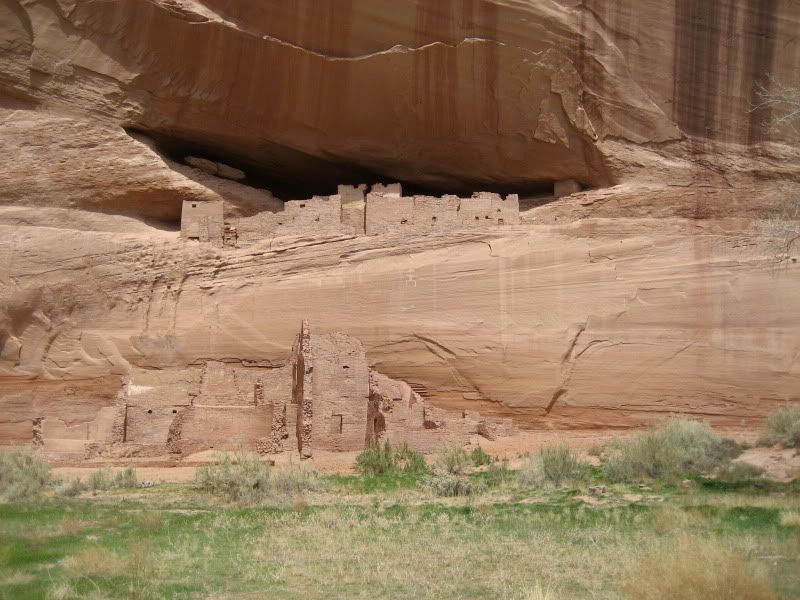
When we pulled up to the entrance station of Petrified Forest National Park last weekend, we were given the standard national park map, but this one had an extra piece of paper stapled to it with a long list of “Don’ts.” Don’t collect any pottery chards or any archaeological artifacts. Don’t deface or destroy natural features or archaeological sites. Don’t walk or climb on ruin walls. Don’t collect petrified wood, rocks, fossils, plants, or animals. Don’t, don’t, don’t, or you will have to pay a hefty fine. Not the most exciting of introductions by any means.
While traveling through northern Arizona over the past couple of weeks and visiting places like Petrified Forest, Monument Valley Navajo Tribal Park, and Canyon de Chelly, we could not help but think about the principle of Leave What You Find. This principle is the most ethical of the Leave No Trace principles. When you find the most beautiful piece of petrified wood, or the coolest looking antlers, and there is nobody for miles and miles, what are you going to do? The best answers to that question we’ve heard from our youngest audiences: “If I took that awesome rock, the next kid who came hiking down this trail would not get to see it.”
At the same time, in all of these locations there are physical barriers between the visitors and the rock art, archaeological sites, and petrified wood. At Newspaper Rock in Petrified Forest, spotting scopes are provided to get a closer view of several boulders covered in petroglyphs. In Canyon de Chelly, at the bottom of the one and only hike open to the general public without a Navajo guide, there are spectacular views of the White House ruins, out of reach behind a big green fence.
Back at Petrified Forest, in the Rainbow Forest Museum, we found a display showing the long history of the problems the park has had with the removal of petrified wood and artifacts. The display included several letters from people who had taken objects from the park but after a time were filled with regret and sent the items back to the park. The letters dated back to as early as the 1930’s and as recently as the late 1990’s. All were written with complete sincerity.
The different land management agencies experience similar problems with the removal of artifacts or natural objects. Some have been forced to take extreme measures and either completely close access to some sites or build physical barriers to prevent visitors from getting a little too close. We can only hope that as we focus on educating people about Leave No Trace, one day there will not be a need for such measures.
All the best…
Agata and Jason




5 comments:
The biggest "leave what you find" hurdle I encounter is seashells on public beaches. Any suggestions?
Dear Anonymous, think of the hermit crab looking for new shelter, small octopus seeking cover, or the use of shell as camouflage for fellow land and sea dwellers. When you understand the importance of shell to the environment your fingers may become less sticky.
In Washington State, there are many reasons to leave your oyster shells on the beach - read on - http://wdfw.wa.gov/fish/shelfish/beachreg/shuck.htm
Thanks for your comment. The issue of people taking seashells from a beach can be a challenging one to address. It boils down to ones own personal ethic. The idea is to get people thinking about the idea of taking something home and what potential impacts that may have on the ecosystem or on the next visitors. The decision is not always clear cut or obvious but the overriding ethic is to enjoy the outdoors responsibly. If everyone keeps this in mind, then all lands used by the public for recreation will be better off in the long run.
What about butterflies and moths? They are mobile, so taking one doesn't usually impact the experience of the next visitor. A butterfly sitting on a flower by a trail will surely be gone by the time the next guy gets there.
They reproduce so fast that there will always be another one to replace one that is collected.
I think that collecting butterflies is OK as long as we don't take large numbers of them. Just one or two of each kind doesn't violate LNT, I don't think. Am I right?
Butterflies and moths?... that's an interesting question. The principle “Leave What you Find” definitely has more of an ethical backbone to it than the other principles; therefore it is harder to interpret. While the other principles do involve ethics, they are also supported by scientific research that provide recommendations such as: camp 200 ft. from water, spread out when traveling through pristine environments, etc.
Leave No Trace is about making good decisions when spending time outside. Ideally, our enjoyment of the outdoors shouldn’t unnecessarily harm the environment. Rather, we should do everything we can to ensure that we leave places as good, if not better, than we found them. Collecting butterflies is a perfect example of the kind of decision making that The Leave No Trace Center for Outdoor Ethics tries to promote – should I pull this creature from its natural habitat and kill it so that I can round out my collection, or should I try to get a photo instead? Rarely is there a single “right” answer. However, if we as outdoor enthusiasts want to enjoy nature sustainably, we should consider eliminating those actions that cause unnecessary and avoidable impacts to the landscape.
One side note, it's important to be knowledgable about which species are endangered and illegal to collect. Also, collecting of ANYTHING on some public lands could constitute a felony. So there are sometimes legal ramifications as well. Here's a interesting article discussing this very thing: http://www1.american.edu/TED/poachbut.htm.
Thank you for your thoughts!
Post a Comment